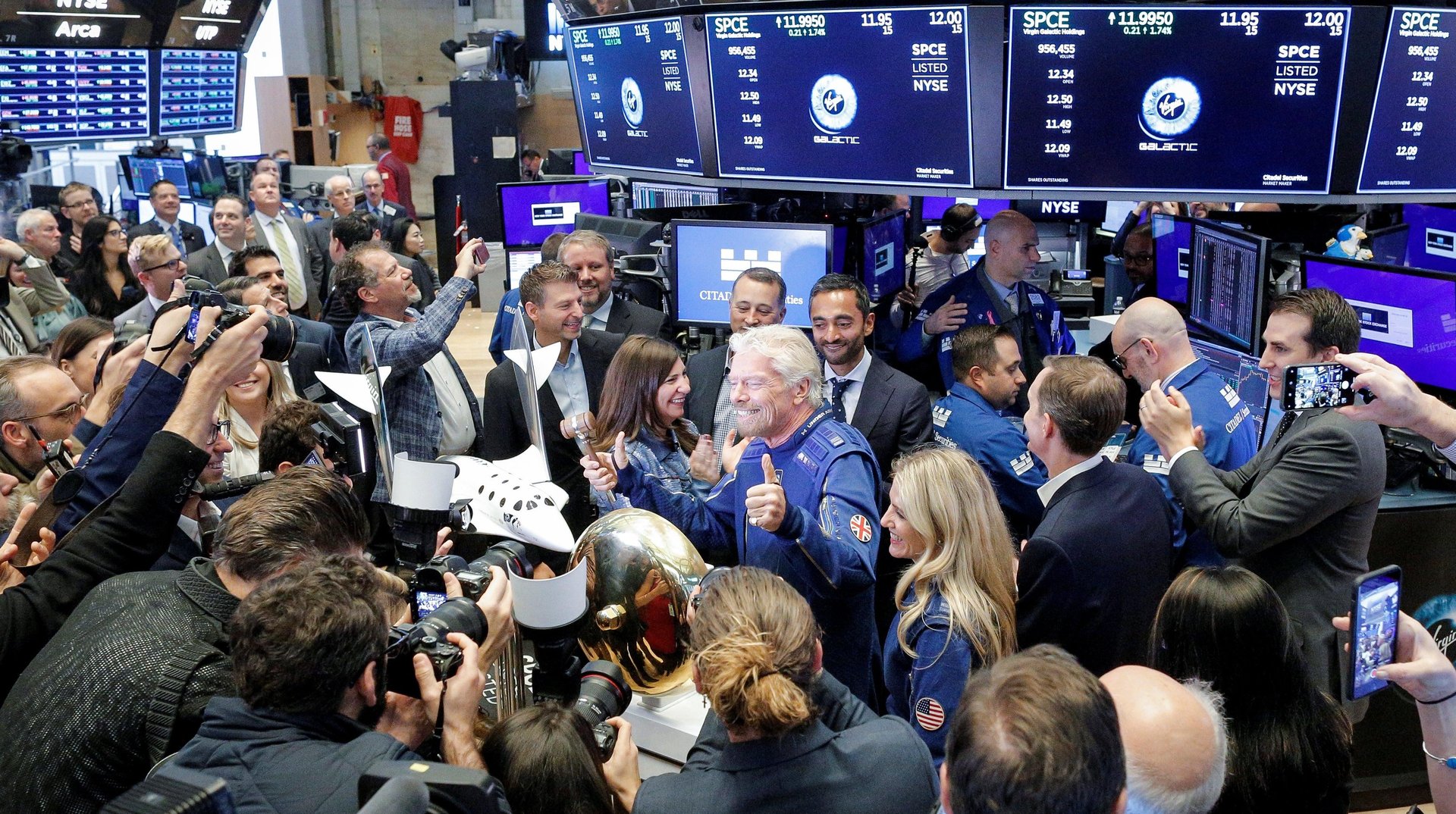How to put your money into the space economy
What investors can learn from two space-focused ETFs

Investing in space isn’t easy. As in any frontier technology field, it’s difficult to predict which businesses will be winners and losers, if you’re even right that the sector is primed to soar. Finance experts would argue the right move is a portfolio strategy (RIP Harry Markowitz) with balanced exposure to all the different assets in space that are changing the economy back on Earth.
Suggested Reading
Exchange-traded funds (ETFs) are one way to get there. Perhaps the most specifically structured space ETF is UFO, which is managed by Procure Asset Management. It’s built on an index compiled by VettaFi, which uses a specific formula to assemble the right collection of publicly traded companies: To be eligible, a company must earn either more than 50% or more than $500 million of its revenue from space activities.
Related Content
Twice a year, VettaFi reallocates this index. The most recent reshuffle helps capture at least three important trends in the space economy, good for any would-be space industry investor to keep in mind.
1. SPACS are still having a tough go
The boom in space companies going public through special-purpose acquisition companies hasn’t played out well for the industry. Two space SPACS, rocket-maker Astra and space antennae builder SatixFy, were removed from the VettaFi index after the three-month average of their daily trading volume fell below $1 million; both companies have seen their share price fall below $1. Still, there are survivors. Virgin Galactic saw a boom in its stock price that boosted the UFO ETF ahead of Virgin’s first commercial flight, but there’s still uncertainty about the company’s long-term future.
2. It’s the end of satellite TV
Television broadcasts from space have peaked as a business, according to many market analysts, as broadband internet has the capability to deliver the same content, even from orbit. AT&T came out of the UFO portfolio this month because of the slump in DirectTV, once the largest US satellite TV business. In 2021, AT&T spun out DirecTV as its own company with co-investor TPG, a private equity firm, selling 30% of the business for $7.1 billion—a roughly 50% fall in value since AT&T bought the satellite broadcaster for $49 billion in 2015.
3. It may be time to invest in the Moon
Two new companies were added to UFO’s collection: Intuitive Machines and ispace. Both are building robots that can deliver cargo to the surface of the Moon, with plans to capitalize on a $2.6 billion pot of money NASA has set aside to hire private companies to do just that. Tokyo-based ispace failed in its first landing attempt earlier this year, but remains on course for two more attempts. Intuitive Machines, meanwhile, is a US firm that is planning its first attempt to put a lander on the Moon before the end of this year, and it also won a share of a five-year, $719 million engineering services contract with NASA. It is publicly traded after a SPAC transaction (of more recent vintage).
“[Intuitive Machine’s] stock price has been relatively stable after some craziness in the few weeks following the company’s official debut on Nasdaq, which is actually quite remarkable when you consider how other SPAC companies have fared,” notes Micah Walter-Range, who is president of space consulting firm Caelus Partners and helped develop the index underpinning the ETF.
A broader vision of the space economy?
UFO hasn’t performed amazingly since its inception in 2019, losing about 5.5% of its value; for comparison, an investment in an ETF based on the S&P 500 index would have grown more than 50%. To a certain extent, that’s to be expected given the bearish market for technology stocks in the last two years and the risks involved with novel, capital-intensive business models.
Another prominent space-focused ETF, ARKX, is produced by investor Cathy Wood’s ARK Investments. It has lost about 30% of its value since its inception in 2021, but has out-paced UFO this year, growing 13% compared to UFO’s fall of 4%. But that reflects different methodologies: While UFO relies on a stringent definition of space revenue, ARKX makes a more qualitative argument that the sector’s impact is being across a larger share of the economy.
Also consider the top 10 holdings of each ETF: UFO has six satellite operators, two makers of spacecraft, and two manufacturers of electronics used to communicate with spacecraft. ARKX, meanwhile, has one satellite operator and a space-focused electronics manufacturer, but also includes an electric-plane builder, a drone company, a 3D-printing ETF, two terrestrial robotics manufacturers, two defense contractors, and a heavy machinery company.
You can certainly make a case that these disparate industries are going to benefit from the expanding space economy. But the ETF is certainly benefitting from stocks that don’t necessarily match its thesis. Amazon, for example, makes up 2% of ARKX, likely because it is building its own satellite network, but its hard to say that investment (or, someday, its returns) is meaningfully affecting Amazon’s stock price right now. Alphabet, the Google parent, is also part of the ETF, though its space investments are not meaningfully affecting its bottom line.
That’s maybe the most important lesson at all for prospective ETF investors: Make sure the label matches what’s in the can.